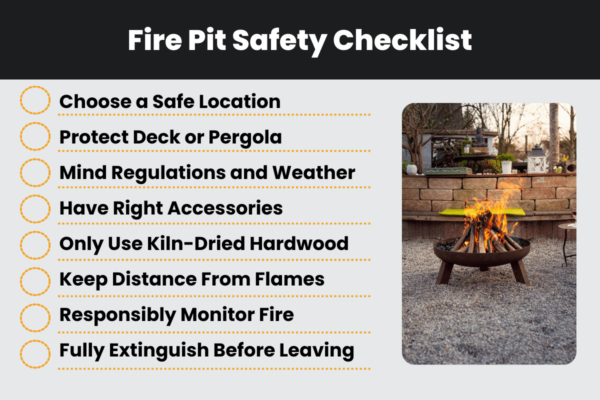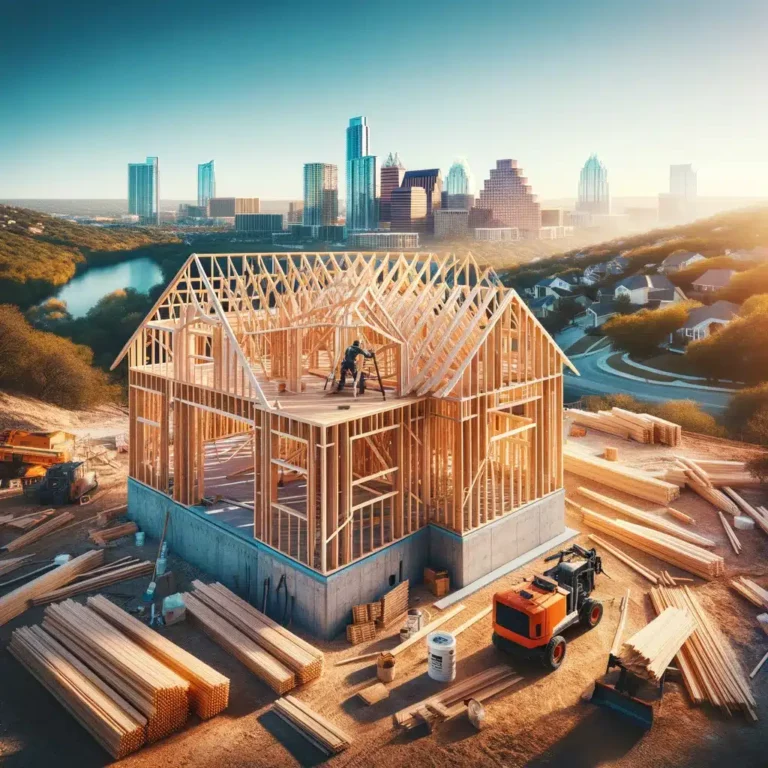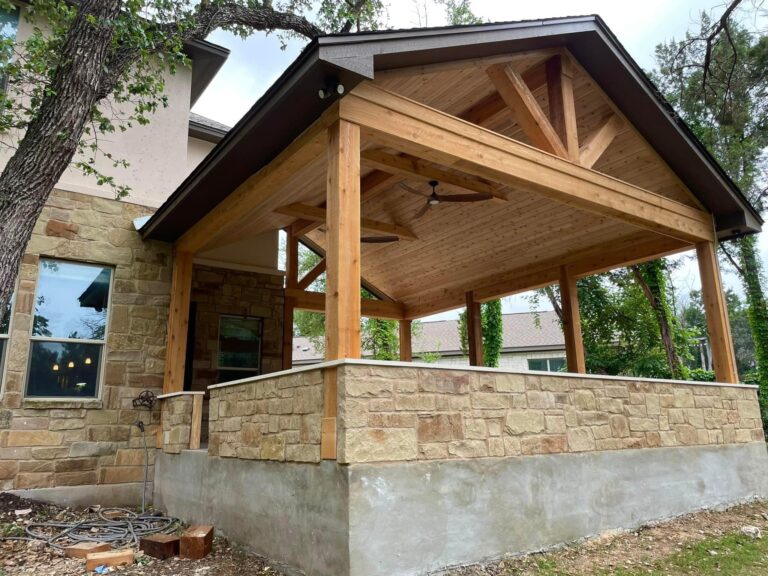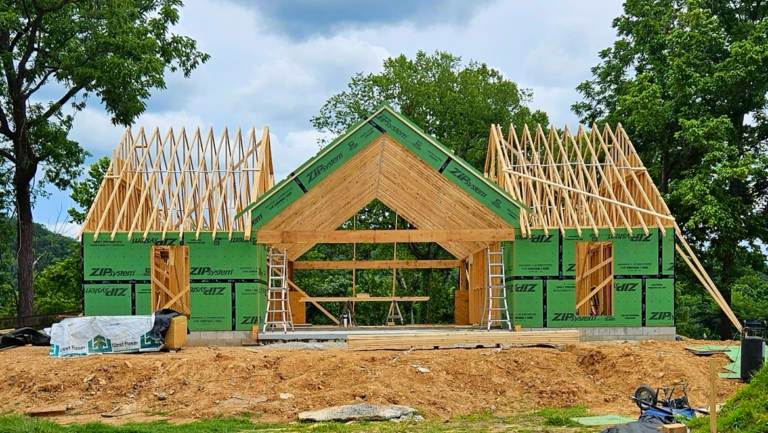Safety Tips for Enjoying Your Outdoor Fire Feature
Outdoor fire features, such as fire pits, fire tables, and fireplaces, are popular additions to outdoor living spaces, offering warmth, ambiance, and a cozy spot for social gatherings. However, with the beauty of dancing flames comes the need for safety precautions to ensure that you, your family, and your friends stay safe.
Here, we will cover essential safety tips for enjoying your fire feature while keeping potential hazards at bay. Whether you’re using a traditional wood-burning fire pit, gas-powered fire feature, or portable fire pit, following these guidelines will help you enjoy your outdoor oasis with peace of mind.
Proper Placement and Installation
When setting up your outdoor fire pit, choose a level spot away from flammable structures, such as wooden decks, patio furniture, and wooden structures. To ensure outdoor fire pit safety, there should be at least 15 feet of clearance from nearby structures, power lines, and combustible materials. Avoid placing the fire pit on a flammable surface like a wood deck or dry grass; instead, use a non-flammable surface such as stone, concrete, or brick.
Essential Rules for Placement
- Maintain feet of clearance around the fire pit.
- Choose a spot with adequate clearance from overhanging branches and deck rails.
- Avoid areas with direct sunlight on gas tanks or propane tanks.
Following these placement guidelines ensures that your fire pit is in the safest possible position, minimizing the risk of accidents.
Understanding the Different Fuel Types
The type of fuel used for your fire pit plays a significant role in its safe operation. Here’s a look at common fuel types and related safety measures:
Wood-Burning Fire Pits
For wood-burning fire pits, using seasoned hardwood is recommended. This type of wood burns cleaner and emits fewer toxic fumes than pressure-treated wood or softwoods. It’s also important to avoid pieces of wood that produce excessive particulate pollution, which could lead to an unhealthy level of smoke.
Safe Fuel Tips
- Use kiln-dried hardwood or seasoned hardwood for clean burning.
- Avoid using dangerous fuels like lighter fluid, as it can lead to sudden flare-ups.
- Do not burn pressure-treated wood or any wood coated with paint or chemicals.
Gas Fire Pits
Gas fire pits are often considered safer than their wood-burning counterparts because they produce fewer sparks. However, they still require proper precautions.
- Always check the gas valve and gas supply for potential gas leaks.
- Make sure your propane tank is in good condition and the connections are secure.
- Ensure proper ventilation to prevent the buildup of toxic fumes.
By selecting the right fuel type and following safety tips, you can significantly reduce the risk of burns, accidental fires, and gas fire pit burns.
Safety Tips for Lighting and Maintaining the Fire
Lighting your fire pit may seem simple, but it involves several essential precautions. Using the right tools and techniques helps prevent accidental contact with the flames.
Proper Fire Starters and Lighting Techniques
When lighting a wood-burning fire, use a proper fire starter rather than flammable liquids like lighter fluid. A kitchen lighter or long match is suitable for lighting the fire from a safe distance.
Pit Safety Rules
- Always keep a bucket of water, bucket of sand, or fire extinguisher nearby.
- Use long-handled tools to adjust the logs and flames.
- Never leave the fire unattended for any period of time.
Proper Maintenance of Your Fire Pit
Regular maintenance is crucial for the safe operation of your fire pit. This includes removing ashes, checking for potential gas leaks, and ensuring the pit is in good working condition.
- For gas-powered fire pits, schedule professional maintenance periodically.
- Inspect the connections for leaks in gas lines and propane tanks.
- Replace any damaged pit accessories or mesh screens.
Keeping your fire pit in top condition minimizes the chance of accidents and ensures long-term enjoyment of your outdoor fire feature.

Understanding Weather Conditions and Wind
Weather conditions and wind patterns play a crucial role in the safety of outdoor fires. Before lighting your fire pit, always check the weather forecast for adverse weather conditions that could make the situation unsafe.
Wind Safety Considerations
Windy conditions can blow sparks into flammable materials, creating potential fire hazards. If there is a strong wind or gust of wind, postpone using the fire pit. Additionally, ensure that the wind direction does not blow smoke directly toward people or nearby structures.
Additional Tips for Weather Safety
- Do not use the fire pit during burn bans or high-risk wildfire conditions.
- Limit flame height in windy conditions.
- Use a pit screen or spark screen to contain sparks and embers.
By paying attention to weather conditions, you can better control the outdoor fire, keeping friends safe and minimizing the risk of accidents.
Keeping Children and Pets Safe
Children and pets are more vulnerable to fire-related safety hazards, including pediatric burns and severe burns. Establish a safe distance around the fire pit and set rules to keep little ones out of harm’s way.
Essential Safety Tips for Families
- Create a no-play zone around the fire pit, marked with stones or garden markers.
- Ensure that children understand the dangers of fire and know to stay at least 3 feet away from the flames.
- Never leave children unattended near an outdoor fire pit, even for a moment.
These rules help maintain a safe environment for your family while allowing everyone to enjoy time together in your outdoor living space.
Proper Use of Protective Gear
Protective gear isn’t just for professionals—it’s also useful for homeowners. If you’re using a traditional wood-burning fire pit or handling gas-powered fire pit equipment, the right gear can help you stay safe.
Recommended Protective Gear
- Heat-resistant gloves to protect hands when adjusting logs or metal parts.
- Long-sleeved clothing to prevent burns from accidental contact with hot surfaces.
- Safety goggles to shield eyes from sparks when using a wood-burning fire pit.
Wearing protective gear significantly reduces the chance of injury, helping you enjoy your outdoor gatherings without worry.
Proper Use and Storage of Fire Pit Accessories
Accessories like lava rocks, river rocks, and fireproof mats enhance the safety of your fire feature. However, these materials need to be used and stored correctly.
Tips for Using Fire Pit Accessories
- Only use solid materials like lava rocks or dry sand in the fire pit.
- Avoid using river rocks directly in the flames, as they can explode when heated.
- Store all accessories in a dry, safe place away from flammable liquids and direct sunlight.
By keeping pit accessories in good condition and following these guidelines, you’ll reduce the risk of accidental fires.
Adapting to Different Types of Outdoor Fire Pits
Not all Outdoor Fire Pits are created equal. Different types, such as Gas fire tables, wood-burning pits, and gas-fueled fire bowls, come with unique safety considerations.
Traditional Wood-Burning Fire Pit
- Use solid fire pits designed for wood-burning to contain hot spots and embers.
- Place a mesh screen over the fire to limit the escape of sparks.
- Keep a water source, such as a bucket of water or hose, nearby for emergencies.
Gas-Powered Fire Feature
- Always check the gas supply for potential leaks before lighting.
- Ensure proper placement with adequate vertical clearance to avoid overheating nearby structures.
- Turn off the gas valve and disconnect the propane tank after each use.
By understanding the specific safety rules for each type of fire pit, you can better adapt to the unique needs of your outdoor fire feature.
Safety Tips for Outdoor Living Spaces and Custom Fire Pits
If you have a custom fire pit or are integrating the fire feature into your landscape design, follow these basic fire pit safety guidelines to create a harmonious and safe outdoor space.
Key Considerations for Safe Design
- Integrate non-combustible materials around the fire pit area.
- Consider placing the fire pit under a covered patio, but ensure proper ventilation to avoid toxic fumes buildup.
- Maintain a clear zone for foot traffic to avoid tripping or accidental contact with hot surfaces.
With the right planning and design, your fire pit can be a safe and beautiful centerpiece for outdoor gatherings.
Common Fire Pit Safety Concerns
Here are some additional safety concerns to be mindful of:
- Toxic fumes: Avoid burning treated wood or using dangerous fuels that release harmful chemicals.
- Combustible materials: Keep dry vegetation, nearby materials, and other flammable items far from the fire.
- Weather conditions: Never use the fire pit during strong winds or when there’s a risk of rain.
Make Your Outdoor Space Safer Today!
At LV Design & Build, we understand the importance of enjoying your outdoor oasis while keeping safety in mind. Our experts specialize in creating innovative designs for custom fire pits and outdoor living spaces. Contact us today to learn more about our fire pit installation and safety services, and transform your backyard into the perfect spot for time with friends and family.
Whether you’re looking for a modern fire pit, a gas-powered fire pit, or a wood-burning fire feature, we’ll help you create a space that’s both beautiful and safe.






